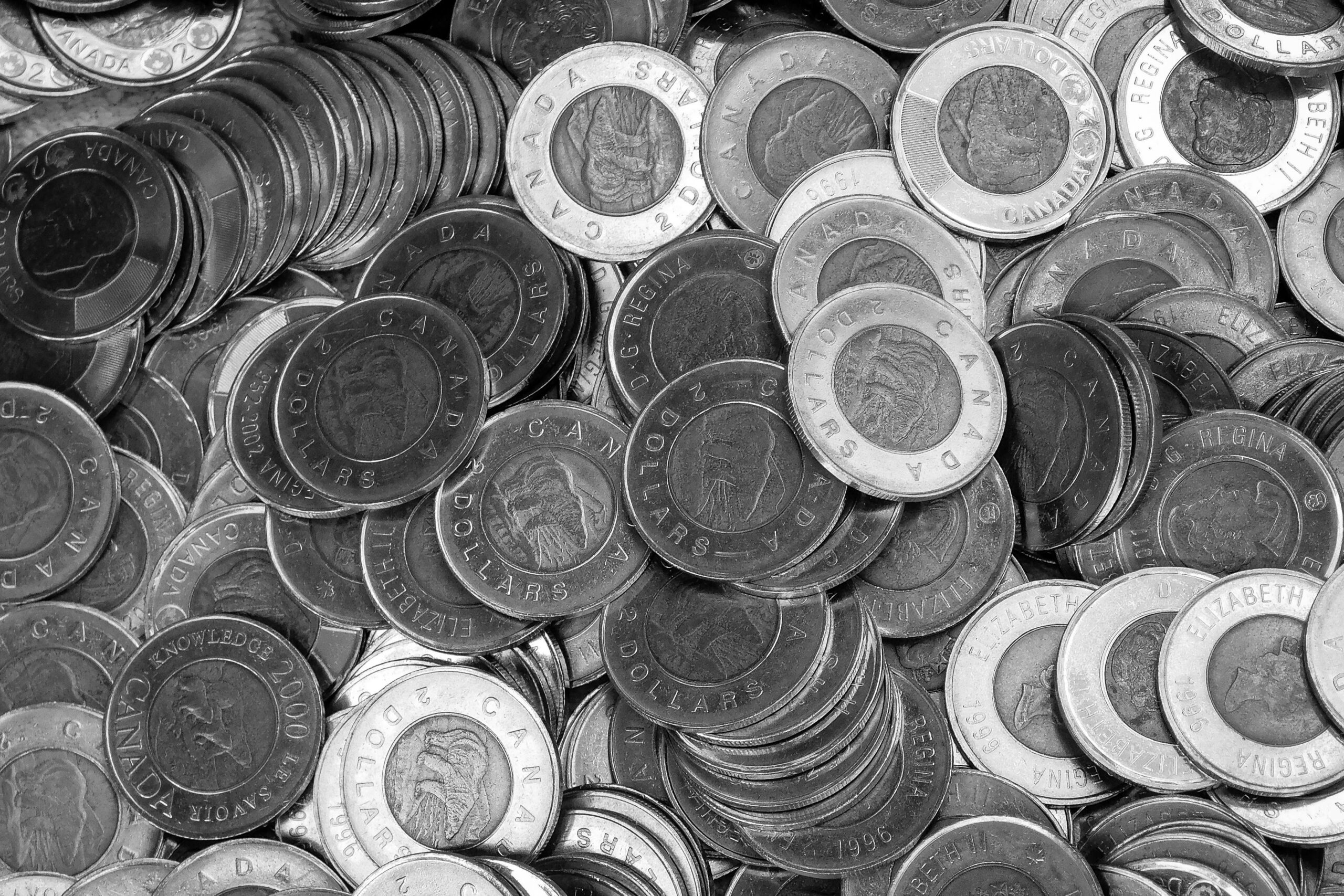Table of Contents
- The Anatomy of Everyday Canadian Coins: A Newcomer’s Essential Guide
- Beyond Your Pocket: The Fascinating World of Canadian Coin Collecting
- Commemorative Coins: Celebrating Canada’s Remarkable History and Culture
- The Elusive and Rare: Uncovering Canada’s Collector’s Treasures
- Frequently Asked Questions About Canadian Coins
For anyone beginning a new chapter of their life in Canada, understanding the local currency is a fundamental step towards seamless integration. However, Canadian coins are much more than simple tools for transaction; they are miniature canvases that depict the nation’s rich history, diverse wildlife, and profound sense of cultural pride. From the familiar Loonie and Toonie to special edition collector’s items, Canada’s numismatic heritage offers a unique window into the country’s soul. This guide explores the story behind the coins in your pocket and introduces the captivating world of Canadian coin collecting, providing essential knowledge for every newcomer.
The Anatomy of Everyday Canadian Coins: A Newcomer’s Essential Guide
Familiarizing oneself with everyday currency is one of the first practical tasks when arriving in a new country. Canada’s circulation coins are not only practical but also deeply symbolic, with each design carefully chosen to reflect a core aspect of the Canadian identity. The Royal Canadian Mint (RCM) produces these coins, which feature distinct images of Canadian wildlife and historical symbols. The most common coins are the five-cent, ten-cent, twenty-five-cent, one-dollar, and two-dollar denominations. One notable absence for newcomers might be the one-cent coin, or penny. The Canadian government discontinued the penny in 2013 to save production costs. While pennies remain legal tender, they are no longer distributed, and cash transactions are now rounded to the nearest five cents. The classic maple leaf twig design on the penny, however, remains a nostalgic piece of Canadian history. Each of the remaining coins carries its own story. The five-cent piece, or nickel, features the Beaver, a powerful symbol of Canada’s sovereignty and early fur-trading history. The ten-cent coin, the dime, is adorned with the image of the Bluenose, a legendary Nova Scotian racing schooner that became a national icon of maritime excellence. The twenty-five-cent coin, or quarter, displays the Caribou, an animal synonymous with Canada’s vast and wild northern landscapes. The introduction of the one-dollar coin in 1987, affectionately known as the “Loonie” for its depiction of the Common Loon, was a significant change. Its gold-coloured appearance and 11-sided shape make it instantly recognizable. It was followed in 1996 by the two-dollar coin, or “Toonie,” a unique bi-metallic piece featuring a Polar Bear, another majestic symbol of the Canadian Arctic.
Key Circulation Coins at a Glance
- Two-Dollar Coin (“Toonie”): This is Canada’s highest-value circulation coin. It is easily identified by its bi-metallic structure, with a silver-coloured outer ring and a gold-coloured inner core. The reverse side features a majestic Polar Bear, an emblem of the Canadian North.
- One-Dollar Coin (“Loonie”): This gold-coloured, 11-sided coin replaced the one-dollar bank note. It is universally known as the Loonie due to the image of a Common Loon, a bird found across Canada, floating on water.
- 25-Cent Coin (“Quarter”): A workhorse of vending machines and parking meters, the quarter features a profile of a Caribou. This animal represents the extensive wilderness and natural heritage of the nation.
- 10-Cent Coin (“Dime”): Though it is the smallest of the coins, the dime carries a significant piece of maritime history. It features the Bluenose, a celebrated fishing and racing schooner that was undefeated in international races for nearly two decades.
- 5-Cent Coin (“Nickel”): The nickel showcases the Beaver, one of Canada’s most enduring national symbols. The beaver’s importance dates back to the fur trade, which was crucial to the country’s colonial development.
- 1-Cent Coin (“Penny”): Now a discontinued relic of the past, the penny featured two maple leaves on a single twig. It was phased out of circulation starting in 2013 to streamline the currency system.
Beyond Your Pocket: The Fascinating World of Canadian Coin Collecting
While most people interact with coins as everyday currency, there is a thriving community dedicated to collecting them for their artistic, historical, and intrinsic value. This hobby, known as numismatics, is particularly vibrant in Canada thanks to the exceptional work of the Royal Canadian Mint. The RCM is not only responsible for producing all of Canada’s circulation coins at its high-tech facility in Winnipeg but also for creating a breathtaking array of collectible coins at its Ottawa headquarters. These numismatic products are crafted with a level of artistry and precision that transforms them from mere money into coveted treasures. For those new to the hobby, the RCM offers several accessible entry points. For instance, a Special Wrap Circulation Roll contains a roll of brand-new, uncirculated coins, often featuring a special commemorative design. The Classic Uncirculated Coin Set is another popular choice, as it gathers one of each denomination from a specific year in pristine, untouched condition. For more serious collectors, the RCM produces exquisite sets made from precious metals. The annual Fine Silver Proof Set is a highlight, featuring coins struck in 99.99% pure silver with a flawless, mirror-like proof finish that accentuates every detail of the design. Similarly, the Pure Silver Fractional Set offers a collection of coins in various weights, often united by a single design theme like the iconic Gleaming Maple Leaf, making it a spectacular showcase of minting excellence.
Commemorative Coins: Celebrating Canada’s Remarkable History and Culture
One of the most exciting aspects of Canadian coinage is the regular release of commemorative issues. These special edition coins, which can be found in both circulation and collector-only formats, serve as tangible reminders of the nation’s milestones, heroes, and values. They are a powerful expression of cultural pride, allowing Canadians to hold a piece of their shared story in their hands. A monumental event currently reflected in Canadian coinage is the historic transition of the monarchy. For over 70 years, the obverse (heads side) of Canadian coins featured the effigy of Queen Elizabeth II. Following her passing, the RCM has begun the process of introducing a new obverse featuring her successor, King Charles III. This change marks a new era for the Commonwealth and for Canadian numismatics, making coins from this transitional period highly sought after. Beyond the monarch, commemorative designs celebrate a vast range of themes. Coins have been issued to honour the sacrifices of Canadian soldiers, with powerful imagery of the National War Memorial and the Tomb of the Unknown Soldier. Others celebrate national symbols like the National Flag of Canada on its anniversaries. These coins are not just currency; they are historical documents that immortalize key moments and foster a collective memory. For anyone seeking to understand Canada more deeply, exploring these commemorative coins is a journey through the events and ideals that have shaped the nation.
The Elusive and Rare: Uncovering Canada’s Collector’s Treasures
For the dedicated numismatist, the ultimate thrill lies in finding rare and elusive coins. While millions of coins are minted for circulation, certain pieces are inherently scarce, making them highly prized collector’s treasures. The most famous example in Canada is the 50-cent coin. Although it is still officially part of Canada’s currency system, the RCM has not distributed it for general circulation in years. Instead, it is produced in small quantities almost exclusively for inclusion in collector sets. Finding one in your change is an exceptionally rare event, making it a hard-to-find treasure. The value of a collectible coin is determined by several factors, including its rarity, condition, and the material it is made from. Coins crafted from precious metals like gold and silver have an intrinsic value that often far surpasses their face value. The RCM is a global leader in producing high-purity precious metal coins, such as those in the renowned Gleaming Maple Leaf series. For discerning collectors, concepts like “First Strikes” are also important. These are the very first coins produced from a new die, which are believed to have the sharpest and most detailed impressions. Whether it’s an old, discontinued penny, a rare 50-cent piece, or a modern masterpiece in pure silver, the world of Canadian collector coins offers endless opportunities for discovery and a profound connection to the nation’s numismatic heritage.
Frequently Asked Questions About Canadian Coins
The main Canadian coins currently in circulation are the 5-cent (Nickel), 10-cent (Dime), 25-cent (Quarter), $1 (Loonie), and $2 (Toonie). The 1-cent (Penny) was discontinued in 2013 and is no longer distributed.
The ‘Loonie’ is the common nickname for Canada’s one-dollar coin, which features a Common Loon on its reverse side. The ‘Toonie’ is the nickname for the two-dollar coin, a bi-metallic coin featuring a Polar Bear.
The Royal Canadian Mint stopped distributing the one-cent penny in 2013 as a cost-saving measure. The cost of producing each penny had exceeded its face value. While they remain legal tender, cash transactions are now rounded to the nearest five cents.
The Royal Canadian Mint is the Crown corporation responsible for minting and distributing all of Canada’s circulation coins. It also produces a wide variety of high-quality numismatic and collector coins, as well as bullion products, for clients worldwide.
Several factors can make a coin more valuable, including its rarity (low mintage), historical significance (like a commemorative edition), its condition (uncirculated or proof), and its composition. Coins made of precious metals like fine silver or gold are intrinsically valuable.
Talk to us to find out more. ->
The content above is not intended to provide legal advice or opinions of any kind and may not be used for professional or commercial purposes.







